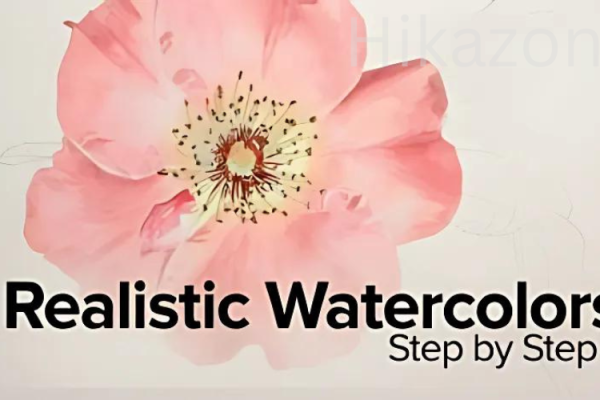Leonardo da Vinci and the Italian High Renaissance By George Bent
$59.00 $5.00
Leonardo da Vinci and the Italian High Renaissance By George Bent – Digital Download!
Content Proof:
Review of Leonardo da Vinci and the Italian High Renaissance by George Bent
Introduction
The course “Leonardo da Vinci and the Italian High Renaissance,” taught by Professor George R. Bent of Washington and Lee University, offers an illuminating journey through the life and times of one of history’s most brilliant minds. This meticulously crafted series of 36 lectures unfolds like a rich tapestry, weaving together threads of art, science, and culture that define the Italian High Renaissance. With a focus on Leonardo’s inventive spirit, the course captures not only his artistic masterpieces but also the socio-cultural backdrop that informed his groundbreaking work. It’s a treasure trove of insights aimed at both art enthusiasts and novices, offering an engaging exploration that has garnered high praise from its audience.
The Artistic and Cultural Landscape
One of the most compelling aspects of the course is its comprehensive approach to the artistic milieu of the Italian High Renaissance. The period itself is often characterized as a rebirth of classical ideals, an era when art transcended mere representation to embody deeper meanings and emotional truths. In examining Leonardo’s life, Professor Bent contextualizes his genius within the vibrant cultural environment flourishing in Italy during the late 15th and early 16th centuries.
- Influential Artists: In addition to Da Vinci, the course touches upon contemporaries such as Michelangelo and Raphael, highlighting both their collaborations and rivalries. This interplay enriches the understanding of Leonardo’s artistic motivations and innovations.
- The Role of Patronage: The shift in patronage systems from the Church to wealthy individuals and families, such as the Medici, is explored, illuminating the ways in which economic factors shaped creative expression.
At this juncture, one cannot overlook the metaphor of a flourishing garden. Just as a garden thrives when nurtured by diverse influences, so too did the Italian High Renaissance thrive on the exchange of ideas and artistic methods. The course does an exceptional job of showing how Leonardo’s works, such as the “Mona Lisa” and “The Last Supper,” were products of this rich cross-pollination of talents and ideas.
Leonardo’s Oeuvre: Art and Science Intertwined
One of the most riveting themes in the course is the intricate relationship between Leonardo’s artistic pursuits and his scientific inquiries. His notebooks, filled with sketches and observations, serve as a testament to his insatiable curiosity and relentless quest for knowledge.
- Artistic Techniques: The lectures delve into Leonardo’s pioneering techniques of chiaroscuro and sfumato, demonstrating how these methods added depth and realism to his art. This ability to merge artistry with scientific understanding exemplifies Leonardo’s multifaceted genius.
- Scientific Contributions: Beyond aesthetics, Leonardo conducted studies in anatomy, botany, and mechanics that were revolutionary for his time. For instance, his dissections of the human form contributed significantly to both art and medicine, offering visual documentation of anatomical structures that had never been accurately illustrated before.
In essence, this dual focus on art and science positions Leonardo as a bridge between these two realms, a Renaissance man in the truest sense of the word. The course effectively highlights that his genius lay not merely in his artworks but in his holistic approach to understanding the world around him.
Engaging Presentations and Audience Reception
As attested by numerous reviews, George Bent’s presentation style is a standout feature of this course. His ability to engage the audience with anecdotes, visuals, and an animated delivery transforms what could have been a dry recounting of facts into a vibrant exploration of Leonardo’s life and era.
- Visual Richness: The course is visually enriched with high-quality images of Leonardo’s artwork, sketches from his notebooks, and contextually relevant historical artifacts. This visual approach not only illustrates points but also creates a memorable learning experience.
- Emotional Resonance: There is a certain emotional pull in Bent’s narrative that makes it difficult for learners to disengage. The human stories behind each painting, the trials, and tribulations of Leonardo’s life, and the environmental factors affecting his work are woven seamlessly into the lectures.
Such a method not only adds depth to the material but also prompts personal reflection among viewers, allowing them to connect with art on a more visceral level.
The Legacy of Leonardo da Vinci
No exploration of Leonardo would be complete without examining the profound legacy he left behind. His influence extends far beyond the confines of art, permeating various fields such as engineering, anatomy, and even modern artistic movements.
- Cultural Impact: The course addresses how his ideas inspired subsequent generations, including artists like Salvador Dalí and Pablo Picasso. This ripple effect of influence emphasizes Leonardo’s role not just as an artist but as a pioneer whose vision shaped cultural paradigms.
- Educational Relevance: Furthermore, the lessons drawn from his life and work continue to find relevance in contemporary discussions about creativity, innovation, and interdisciplinary approaches in education and professional practice.
In the greater narrative of the High Renaissance, Leonardo stands as a titan, a beacon of the ideal human whose thirst for knowledge inspired countless others to pursue their own paths of discovery. The course reinforces the notion that understanding his contributions is vital for grasping the fabric of Western culture as we know it today.
Conclusion
In summary, “Leonardo da Vinci and the Italian High Renaissance” by George R. Bent is an enriching study that captures the essence of one of history’s most ingenious figures. The blend of detailed analysis, outstanding visuals, and engaging presentation makes this course an invaluable resource for anyone looking to understand the complexity of Leonardo’s contributions to art and science within the transformative context of the Italian High Renaissance. Whether you’re a seasoned art lover or just curious about this remarkable period, Bent’s course offers insights that resonate and inspire. Overall, it’s an enlightening experience that expands our appreciation of Leonardo da Vinci beyond his art, illuminating the ways in which this exceptional man changed the world.
Frequently Asked Questions:
Business Model Innovation: We use a group buying approach that enables users to split expenses and get discounted access to well-liked courses.
Despite worries regarding distribution strategies from content creators, this strategy helps people with low incomes.
Legal Aspects to Take into Account: Our operations’ legality entails several intricate considerations.
There are no explicit resale restrictions mentioned at the time of purchase, even though we do not have the course developers’ express consent to redistribute their content.
This uncertainty gives us the chance to offer reasonably priced instructional materials.
Quality Assurance: We guarantee that every course resource you buy is exactly the same as what the authors themselves are offering.
It’s crucial to realize, nevertheless, that we are not authorized suppliers. Therefore, the following are not included in our offerings:
– Live coaching sessions or calls with the course author.
– Entry to groups or portals that are only available to authors.
– Participation in closed forums.
– Straightforward email assistance from the writer or their group.
Our goal is to lower the barrier to education by providing these courses on our own, without the official channels’ premium services. We value your comprehension of our distinct methodology.
Be the first to review “Leonardo da Vinci and the Italian High Renaissance By George Bent” Cancel reply
You must be logged in to post a review.
Related products
Art & Entertainment
Art & Entertainment
Art & Entertainment
Video Editing for Beginners – Complete Shotcut Masterclass By Stone River eLearning
Art & Entertainment
Art & Entertainment
Art & Entertainment
Getting Started with Colored and Graphite Pencils By Mary Jane Begin

 Six-Figure Copywriting for Writers By Tim Denning
Six-Figure Copywriting for Writers By Tim Denning 

















Reviews
There are no reviews yet.